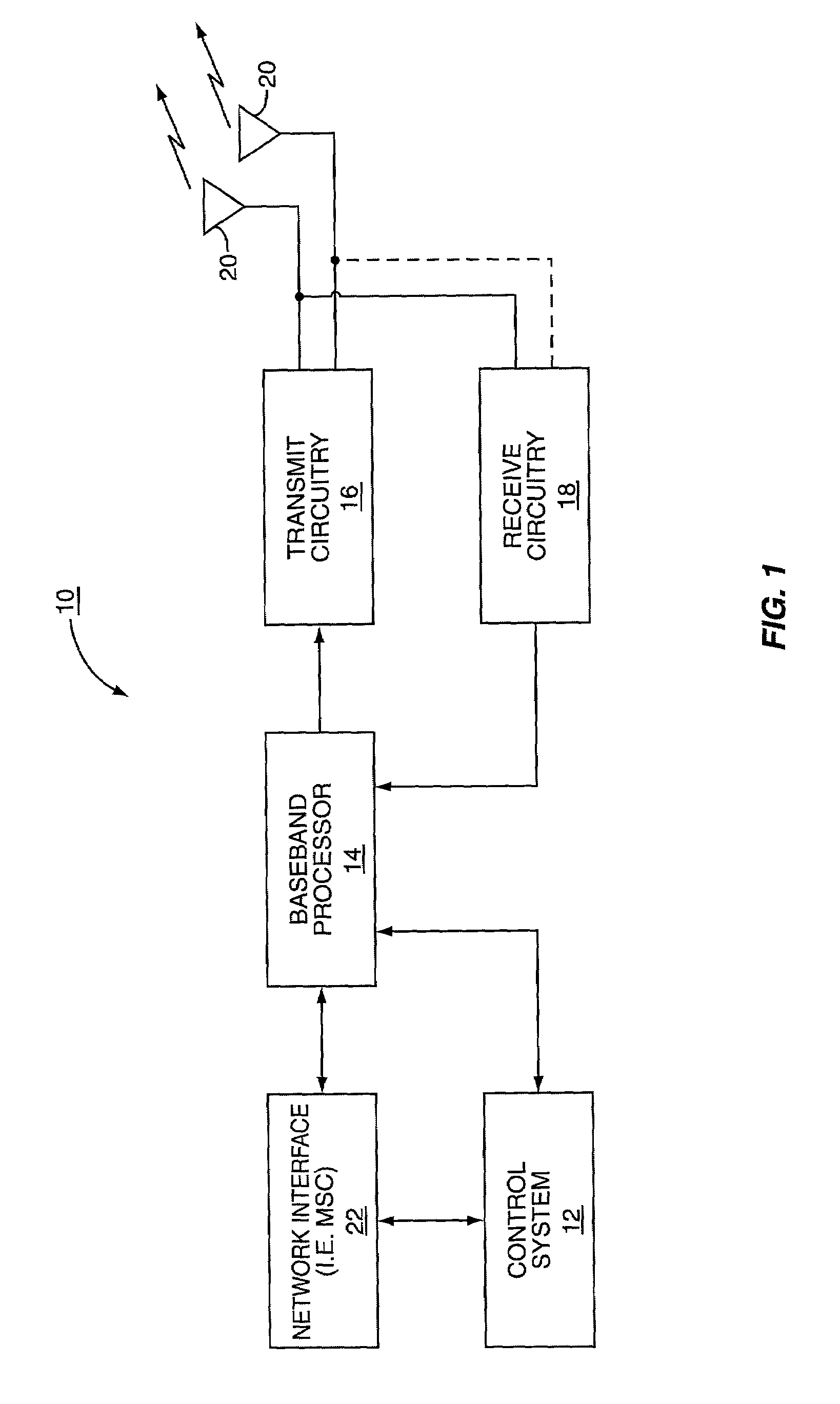Efficient OFDM communications with interference immunity
a technology of interference immunity and ofdm communication, applied in the field of wireless communication, can solve the problems of significant source of noise in a cellular system, interference caused by signals destined to other receivers, and the theoretical capacity of wireless systems is extremely large, and achieve the effect of high data rate and facilitate error correction and detection
- Summary
- Abstract
- Description
- Claims
- Application Information
AI Technical Summary
Benefits of technology
Problems solved by technology
Method used
Image
Examples
Embodiment Construction
[0021]Interference and fading are significant impediments to achieving high data rates in today's wireless communication systems. A resource to combat fading is called diversity. Diversity provides a replica of a desired signal to a receiver in another format. Potential diversity resources generally include:[0022]temporal diversity, where another replica of the transmitted signal is sent to the receiver at another time;[0023]frequency diversity, where another replica of the transmitted signal is sent to the receiver in another frequency; and[0024]spatial diversity, where multiple transmitter (Tx) and receiver (Rx) antennas are used for sending / receiving another replica of the transmitted signal.
[0025]Temporal and frequency resources are precious. In this light, spatial diversity is preferred, as it does not inflict time and frequency penalties. However, there is a cost penalty. In order to benefit from spatial diversity, receiver antennas should not be too close to each other or els...
PUM
 Login to View More
Login to View More Abstract
Description
Claims
Application Information
 Login to View More
Login to View More - R&D
- Intellectual Property
- Life Sciences
- Materials
- Tech Scout
- Unparalleled Data Quality
- Higher Quality Content
- 60% Fewer Hallucinations
Browse by: Latest US Patents, China's latest patents, Technical Efficacy Thesaurus, Application Domain, Technology Topic, Popular Technical Reports.
© 2025 PatSnap. All rights reserved.Legal|Privacy policy|Modern Slavery Act Transparency Statement|Sitemap|About US| Contact US: help@patsnap.com



